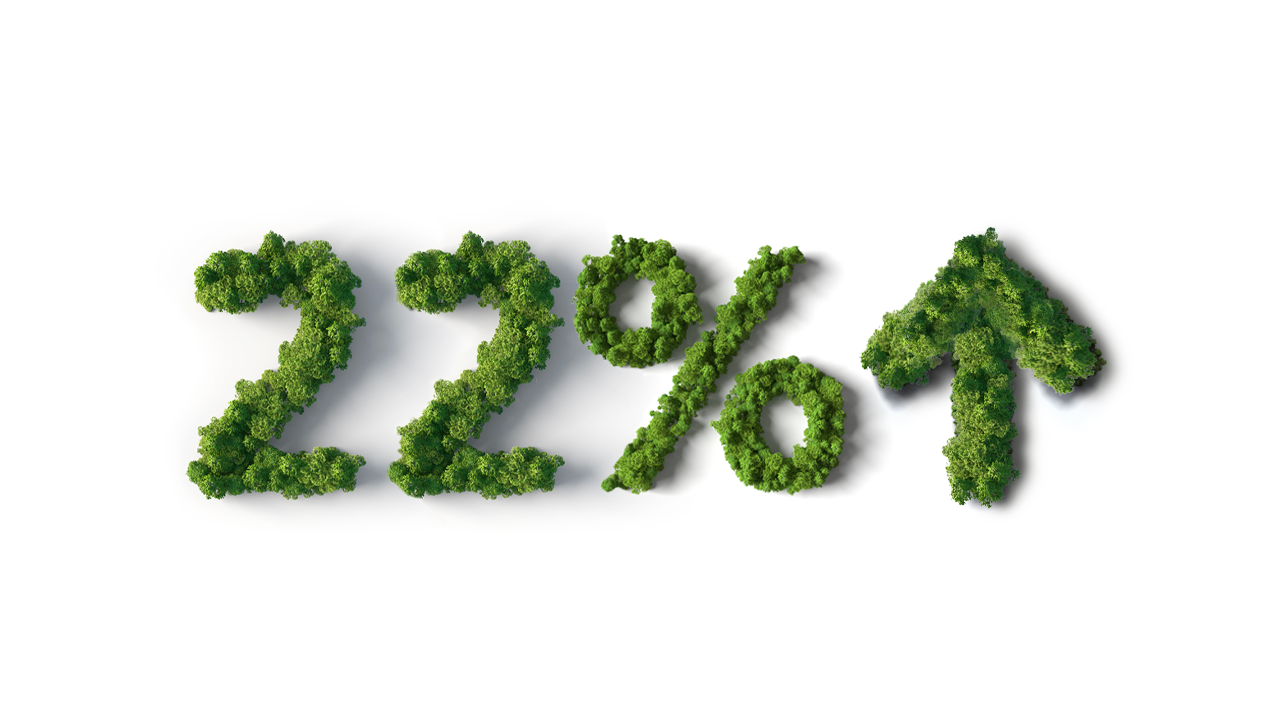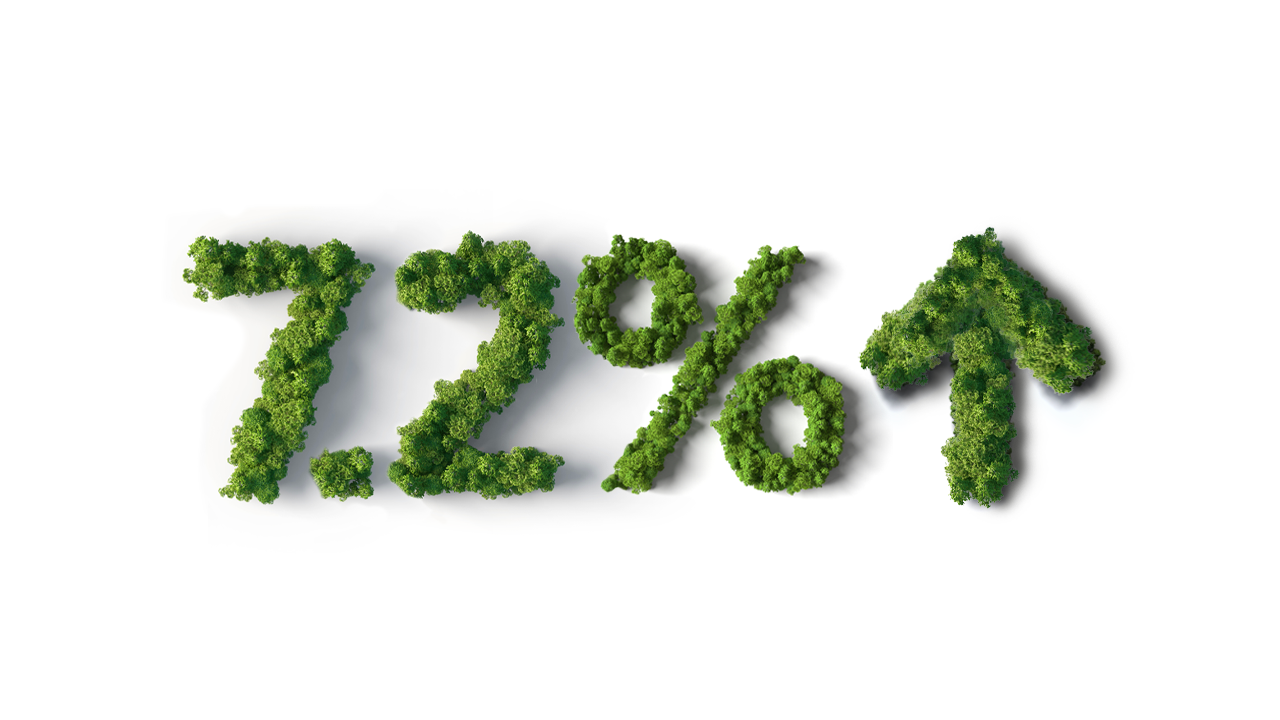Sustainable Capabilities

Mackenzie answers your questions on
sustainable investing.
You've got questions.
We've got answers.
Featured questions
Learn moreWhat’s being talked about?
Learn moreWhy does it matter to my practice?
Learn moreFeatured questions
Is sustainability the next wave of opportunity?
The drive for sustainability—making sure the planet is livable for future generations—will revolutionize much of what we do and how we do it today, including how we get around, what we buy, what we eat, how things are made, how we heat our homes ...
Forbes magazine calls the transition to sustainable energy “The $100 Trillion Investment Opportunity.”1
Consider this:
- 10 million EVs were bought in 2022 versus 1 million in 2017 and 120,000 in 2012.2
- Investments in the new grid are projected to top US $15 trillion in this decade
- The global smart building market is projected to grow 22% per year between 2022 to 2029 from $80.62 billion in 2022 to $328.62 billion3
- Plant-based protein is expected to grow 5 times this decade replacing meat with products that are 80-99% less greenhouse gas intensive4


Where are we on the path to net zero?
Progress is being made, but the path to net zero remains challenging. Containing global warming to within 1.5° to 2°C requires aggressive cuts to global greenhouse gas (GHG) emissions combined with carbon offsets to reach net zero by 2050. (At net zero emissions, the global temperature will stop rising.)
By some estimates, current carbon reduction commitments will only reduce emissions by about 10% in 2030 relative to 2019 levels, well below what is needed to achieve Paris Agreement goals. We can still accelerate progress in this decade with greater emission reductions by high-income countries and increased climate finance, but further delays in climate action would put 1.5°C beyond reach.
Source: Mackenzie 2023 Green Book
Is solar power the way of the future?
We believe the future looks bright for solar energy. In less than a decade, the cost of large-scale solar power has fallen by more than 85%5 making solar and wind the cheapest forms of energy for new builds—costing less than natural gas, geothermal, coal, or nuclear. Compared to wind power, solar is less expensive, more predictable, and easier and quicker to install—it can take up to 10 years to plan and develop a wind farm versus two years or less for solar. The US$200 billion solar power market is expected to grow at a CAGR of 7.2% to US$368.63 billion by 2030.6
With renewables in total generating just 11% of global energy, it is too early to call any one winner. We believe investors are wise to diversify among various types of renewables (from offshore wind to sugar cane ethanol), and tap into various points of the manufacturing, power generation, storage and distribution chain.


Sustainable, responsible or ESG? What’s the difference?
Sustainable, responsible and ESG investing all refer to the same thing—an investing process that combines traditional financial analysis with environmental, social, and governance-related (ESG) insights to improve long-term outcomes for investors’ portfolios and the world we live in.
Do investors really care about sustainable investments?
Absolutely. The latest RIA Investor Opinion Survey shows that the vast majority of Canadian investors are interested in responsible investments. The report found that:
- 77% of investors are somewhat to very interested in RI.
- 82% of investors would like to dedicate a portion of their portfolio to RI.
- 77% agree that companies with good ESG practices are better long-term investments.


What’s so green about green bonds?
When you invest in a bond, you’re lending money, but what will it be used for? With a traditional bond, the investor may not know. Green bonds, on the other hand, require the borrower to use the money for a specific purpose, which is clearly stated. The green bond “label” gives investors the assurance that their investments will be used to help capitalize new or existing green or environmental projects, such as transitioning the company’s operations to run off renewable energy, refurbishing its buildings to be carbon neutral, or developing recycling infrastructure for its products.
Green bonds are one type of “sustainability bond,” a term that also includes social bonds, which operate in a similar manner, except the projects benefit society in areas such as healthcare, education, affordable housing, and food security.
The amount of sustainable debt issued globally has quadrupled since 2018 to $1.4 trillion in 2022 and is expected to continue rising. A report by McKinsey estimates that $3.5 trillion of spending beyond current levels on low-emission physical assets is needed annually for the world to reach net zero targets.7
What’s being talked about?
-
What does climate change have to do with investing?
Climate change presents investment risk and opportunity. A recent study shows that almost all industries are threatened by the effects of climate change, directly or indirectly. According to the Canadian Climate Institute, the costs of climate-related damage is estimated to slow Canada’s economic growth in 2025 by $25 billion annually, wiping out half of the projected GDP growth in 2022.1
In another survey, opportunities related to climate change exceeded risks. Over 200 of the world’s largest companies reported almost US$1 trillion at risk from climate impacts, and also reported opportunities of US$2.1 trillion.2 Therefore, in the coming years and decades, there are significant risks and opportunities for investors.
Mackenzie is addressing climate change in a number of ways. We have become one of Canada’s largest providers of sustainable funds by launching new investment funds designed to:
- Attract capital to companies that are solving the world’s climate change challenge, and
- Invest in companies that are making real progress on reducing their carbon footprint
We are also taking collaborative action. Mackenzie is a member of Climate Action 100+ which is an initiative by 400 firms ($35 trillion AUM) to ensure the world’s 100 largest corporate greenhouse gas emitters take necessary action on climate change. Mackenzie is also a member of Net Zero Asset Managers Initiative in which 300 members ($59 trillion AUM) have committed to supporting the goal of net zero greenhouse gas emissions by 2050 or sooner by engaging with the thousands of companies in which they invest. -
How do companies get to Net Zero? Hint: 3 ways.
There are three ways for companies to get to Net Zero.
- First, they reduce their energy use as much as possible.
- Then, they switch as much of their energy requirement as possible to a renewable energy source, such as solar or wind.
- Lastly, for the unavoidable energy use that generates carbon, the company can purchase “carbon offsets.”
Carbon offset providers use the money to fund projects that reduce GHG emissions or increase carbon storage to compensate for emissions that occur elsewhere. Some examples of projects include reforestation, building renewable energy, carbon-storing agricultural practices, and waste and landfill management. -
Will renewable energy ever be cheaper than fossil fuel?
It already is. According to a BloombergNEF report, new onshore wind and solar projects cost roughly 40% less than coal or gas plants built from scratch—and the gap is widening.3 Generating solar energy costs $37 per MWh (megawatt hour) based on lifetime costs of a new build, and onshore wind costs $40 per MWh, versus gas at $59, and coal at $112, according to research by investment bank Lazard.4 In fact, they also found that solar and on-shore wind are even competitive when comparing a new build with the cost of simply running existing coal, nuclear and gas plants, since solar and wind have no marginal operating costs.
-
What are Net Zero Asset Managers committed to doing?
The 300+ signatories to the Net Zero Asset Managers Initiative manage US$59 trillion of global assets representing ownership stakes in thousands of companies. The asset managers have committed to supporting the goal of net zero greenhouse gas emissions by 2050 or sooner. That means they will assess their entire book of assets, set targets, and through engagement and collaboration, work to ensure that all of the companies in which they are invested are on track to Net Zero. Asset managers also pledge to create investment products aligned with net zero emissions by 2050 and to facilitate increased investment in climate solutions.
-
How can I tell green from greenwashing?
Greenwashing is the misrepresentation of a product, service or investment, making something appear to be more sustainable than it actually is. For investors, the issue of greenwashing is being addressed on three levels:
- Investee company: Before investing, portfolio managers of sustainable funds carry out rigorous due diligence and research to identify which publicly traded companies actually meet their sustainability standards. ESG data is used to verify and compare a company’s actual efforts to other companies in the same industry, with measurements called KPIs (key performance indicators).
- Investment fund manager: Mackenzie has an in-depth Sustainable Investing Policy which details our procedures and commitment to carry out investment management in compliance with the United Nations Principles of Responsible Investment.
- Regulators: In response to greenwashing concerns in the investment funds industry, the securities regulators in Canada, the U.S., and Europe are working to encourage fulsome and accurate ESG disclosures.
-
Do sustainable companies perform better?
The answer is not so simple. But a growing body of research does demonstrate that sustainable funds on average have achieved comparable or even better financial returns than conventional investments over the long term.5 A 2021 review of over 1,000 studies published over 5 years found that 59% showed similar or better performance relative to conventional investment approaches while only 14% found negative results.
Why does it matter to my practice?
-
Are portfolio managers on board with ESG?
Yes, the vast majority of investment professionals worldwide agree. According to the Responsible Investments Association, 94% of Canadian asset managers use ESG to inform their investment decisions. The top two reasons given were to minimize risk over time, according to 80%, and to improve performance over time, according to 65%.1
In a global survey of more than 1,100 investment professionals, 89% considered ESG issues in some form as part of their investment approach. More Europeans said ESG is central to their investment approach than North Americans (31% versus 18%). Just 13% of investment professionals said they see ESG as a “passing fad that will eventually go out of fashion.” 2
-
Which ESG strategy is right for my client?
Here are the top 4 investment solutions:
- ESG-integrated funds consider material ESG risks as part of their investment research, evaluation, or process. Ideal for all investors who want to safeguard funds from pivotal shifts in environmental, social and governance issues.
- Sustainable Core funds are ideal for investors seeking well diversified, broad exposure to a major asset class (e.g., global equities) through investing in companies with positive ESG practices.
- Sustainable Thematic funds are aimed at clients who want to target a specific ESG trend such as women in leadership or renewable energy.
- Sustainable Impact funds are ideal for clients who want a fund that maximizes impact on a specific ESG challenge or opportunity.
-
Do younger investors really want ESG?
Yes, younger generations are more rapidly adopting responsible investing. According to a recent survey of Canadian investors, over 70% of those under age 55 were somewhat or very interested in responsible investing, versus 51% of those aged 55+. Nearly one-half of the youngest investors, aged 18-34, already own responsible investments, along with over one-third of those aged 35-54, compared to just 18% of investors aged 55+. About 45% of investors under age 55 reported they were more likely to choose responsible investments now than they were one year ago, versus 30% of those age 55+.3
The intergenerational transfer of wealth that will see $1 trillion passed down by 2026 will make Millennials Canada’s wealthiest generation ever. 4 This means the attitudes, values, beliefs, and risk tolerance of younger investors are likely to shape their investment strategies. And advisors need to be ready.
-
How do women feel about responsible investing?
In a recent survey of Canadian investors, women were more interested in responsible investing than men, but were less knowledgeable and less likely to be asked by their advisor. About 67% of women were “somewhat” or “very” interested in responsible investing versus 61% of men. More women than men wanted to be informed about responsible investing options (76% versus 69%), but fewer women were asked by their advisor (26% versus 36% of men). Only 25% of women claimed to have “fair” or “a lot” of knowledge on responsible investing versus 34% of men. About 43% of women said they are more likely to choose responsible investing now than a year ago, versus 36% of men.3
With Canadian women controlling $2.2 trillion of financial assets—a number expected to jump to nearly $3.8 trillion over the next decade—advisors need to consider the values and expectations of this segment.5
-
How does ESG help managers pick stocks?
Portfolio managers have traditionally made stock selection decisions based primarily on financial analysis, which helps them compare and value the companies they are considering investing in.
ESG factors provide added insight into non-financial aspects of a company that may affect its long-term sustainability, financial performance and growth potential.
These ESG factors may include carbon footprint, labour practices, board diversity, executive compensation, and more. Sometimes when ESG analysis reveals that a company is not in line with investor expectations, the portfolio manager will use their ownership stake via voting or dialogue to influence the company to improve its ESG practices.
Portfolio managers can also use ESG analysis to create portfolios that are targeted to specific ESG criteria or investment themes, such as climate change or women in leadership.
-
How can I find out if my clients are values-driven?
There are several signs that can indicate whether someone is values-driven, that is, their actions reflect their beliefs and principles. In listening to your clients, you can get clues which can help determine whether they may be interested in sustainable investing.
Some simple examples:
- Purchasing behaviour: Does your client buy products that are environmentally friendly? For example, does your client drive a hybrid car or an EV? Or buy free-trade coffee or organic food?
- Support causes: Are they active volunteers or do they donate money to causes?
- Daily actions: Do they use a reusable water bottle vs disposable? Do they bring their lunch in reusable containers? Would they ride a bicycle rather than drive to the corner store?
One final clue would be that, if asked, a truly values-driven person would likely be happy to explain what they do and why, and perhaps even try to convince you to do it as well.
1 RIA Canada. 2022 Canadian RI Trends.
2 Capital Group. ESG Global Study 2022.
3 RIA Canada. 2022 Investor Opinion Survey
4 Macleans magazine, March 2022.
Commissions, trailing commissions, management fees and expenses all may be associated with investment funds. Please read the prospectus before investing. Investment funds are not guaranteed, their values change frequently and past performance may not be repeated.
The content of this web page (including facts, views, opinions, recommendations, descriptions of or references to, products or securities) is not to be used or construed as investment advice, as an offer to sell or the solicitation of an offer to buy, or an endorsement, recommendation or sponsorship of any entity or security cited. Although we endeavour to ensure its accuracy and completeness, we assume no responsibility for any reliance upon it.
This document may contain forward-looking information which reflect our or third party current expectations or forecasts of future events. Forward-looking information is inherently subject to, among other things, risks, uncertainties and assumptions that could cause actual results to differ materially from those expressed herein. These risks, uncertainties and assumptions include, without limitation, general economic, political and market factors, interest and foreign exchange rates, the volatility of equity and capital markets, business competition, technological change, changes in government regulations, changes in tax laws, unexpected judicial or regulatory proceedings and catastrophic events. Please consider these and other factors carefully and not place undue reliance on forward-looking information. The forward-looking information contained herein is current only as of March 31, 2023. There should be no expectation that such information will in all circumstances be updated, supplemented or revised whether as a result of new information, changing circumstances, future events or otherwise.